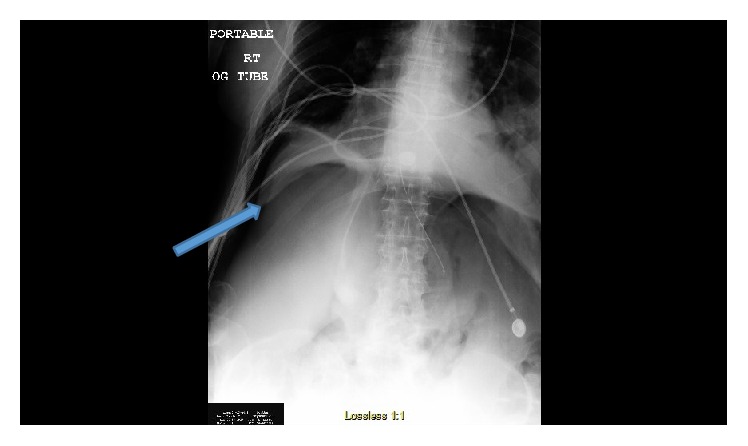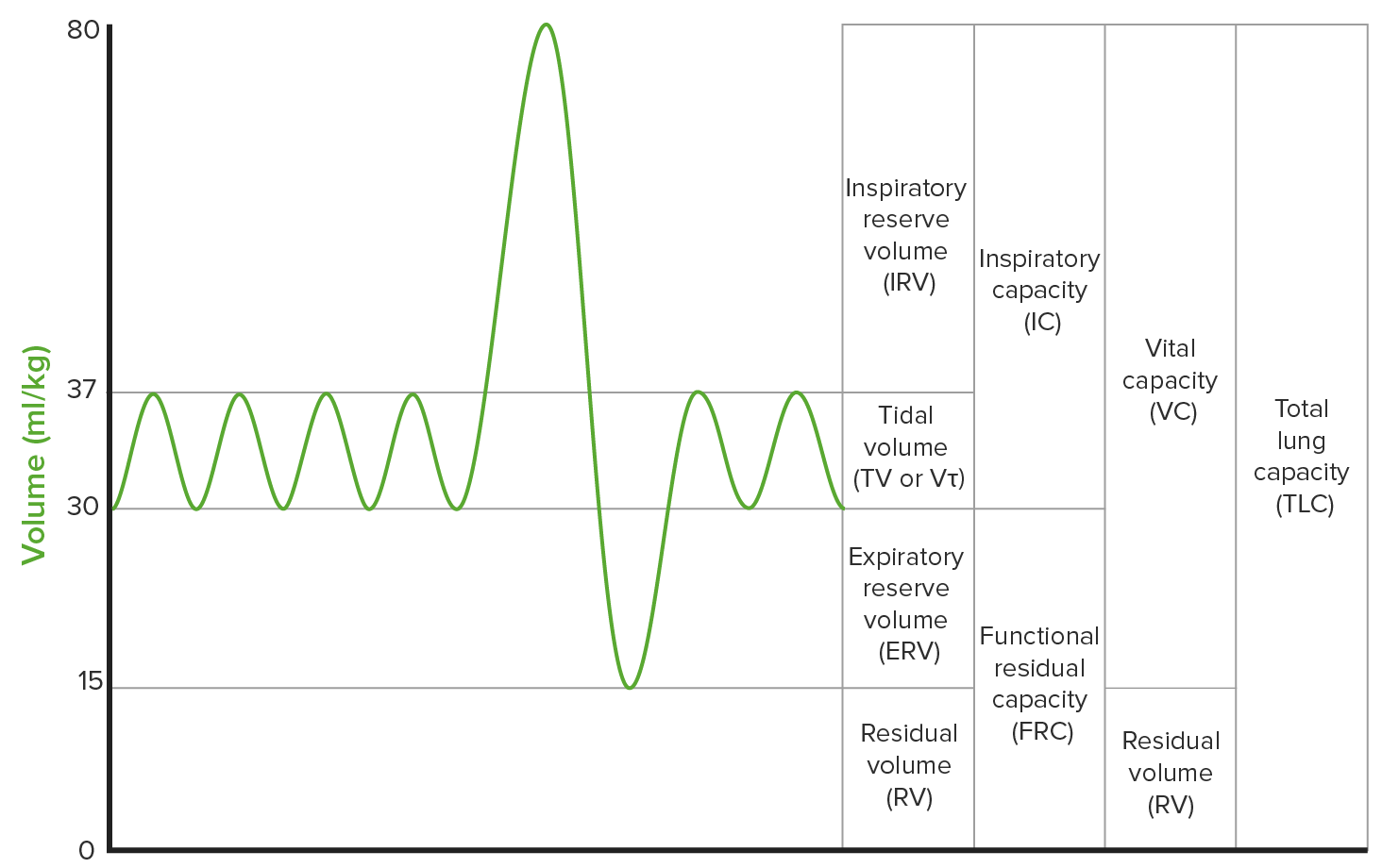Playlist
Show Playlist
Hide Playlist
Chronic Obstructive Pulmonary Disease (COPD): Acute Exacerbation
-
Slides 04 COPD RespiratoryAdvanced.pdf
-
Download Lecture Overview
00:00 Right, so the next section of this talk is going to be about acute exacerbations. These are the commonest cause of admission to hospital in industrialized countries would be an acute exacerbation of COPD. And there are some important questions to answer. The first is, what is the cause of the exacerbation in this presenting patient. It could be infective, in which case they will have purulent phlegm, the sputum culture might be positive and the CRP might be slightly raised, maybe not very high, it may even be only 10 or 15. But that will all indicate that there is a bacterial infection of the bronchi precipitating the COPD exacerbation. Non-infective exacerbations the patient tend not to produce phlegm, or if they do it would be white rather than green phlegm. And you also need to think about potentially other problems. Patients with COPD are at a risk of pneumonia, pneumothorax, PE and they often have cardiac problems as well which might lead to pulmonary edema. So you do a chest X-ray in these patients to exclude those potential differential diagnosis. The second question is, how severe is the exacerbation? Can the patient speak in full sentences? What is the respiratory rate? What is the pulse rate? Now obviously a high respiratory rate and a high pulse rate is bad news, but if its low, just like in asthma, when the patient respiratory rate starts to become abnormally low, that is a very bad sign, and indicative that they do have severe respiratory failure, as does drowsiness, the patient is not fully arousable then they have severe disease. 01:26 The oxygen saturations will also be very beneficial, but the very important question that can only be answered by doing a blood gas is whether they have type 1 or type 2 respiratory failure. 01:38 And type 2 respiratory failure with the retain of the carbon dioxide causing a respiratory acidosis requires a very specific treatment with nasal ventilation which I will discuss in a slide or two. And the last question, is what is the treatment ceiling. How far will we go with treatment with this patient. And the reason why this question has to be asked is that these patients have chronic disability, and many of them when they are coming to hospital with type 2 respiratory failure will be at their best, not able to walk more than 10 or 20 yards, and they may have had recurrent admissions several times over the previous few years. And these patients may not want to go through the full process of the intubated and ventilated if their deterioration is severe enough to warrant it. So what's the treatment for COPD exacerbations. You have to bear in mind that these exacerbations have about a 9% mortality. Nearly 1 in 10 patients who comes to a hospital with exacerbation with COPD will die. So this is an acute problem which has a significant mortality attached to it. They need controlled oxygen, and one of the important points is that you don't need to aim for high oxygen saturation, you just need to aim for a safe oxygen saturation. Higher flow oxygen can cause problems with increasing CO2 retention, as I will discuss in the physiology lecture. 02:58 Nebulized bronchodilators, salbutamol. Very standard therapy, very easy to give. You need to do some blood gases to look for the respiratory acidosis that we discussed a few seconds ago, and you need a chest X-ray to make sure that there's no pneumothorax, lobar collapse and pneumonia or an alternative diagnosis such as pulmonary edema. Now, if the patient has a raised CO2 and they're acidotic, then the standard therapy would be to use nasal ventilation, non-invasive ventilatory support, which I'll discuss in the next slide or two. You'll also, in patients presenting with severe exacerbations of COPD, could consider using intravenous bronchodilators such as aminophylline. And all patients will reveal will be given systemic corticosteroids therapy usually oral prednisolone for 5 days and as I mentioned earlier that's known to reduce the duration of the exacerbation by about a day and day and a half. And if the patient has an infective cause of COPD, then you give them antibiotics, so green purulent phlegm or positive sputum culture, then you may give them the antibiotics suitable for that and normally amoxicillin or doxycycline is adequate therapy for an infective exacerbation of COPD. So non-invasive ventilatory support. 04:11 Now, this is a treatment for type 2 respiratory failure with acidosis, usually due to COPD, although there are other causes of respiratory diseases that can lead to this as well that would benefit from nasal ventilation. The consequence of the COPD being severe is that you're under-ventilating the lungs and the advantage of the nasal ventilator is that by providing a positive pressure on inspiration when the patient takes a breath, with a little bit of positive pressure on expiration as well. What you are you doing is you're increasing the ventilation of the lung, and that allows assistance to the patient, that assistance allows their PCO2 to be blown off to actually be reduced by increasing their respiratory ventilation. And nasal ventilation is normally administered using a nasal or even a full facial mask. 05:08 The clinical trials show that patients with COPD and exacerbation of the COPD with respiratory acidosis treated with nasal ventilation, there's a reduced need for intubation and ventilation in intensive care using mechanical ventilators. But, the patient has to be able to tolerate the mask, has to be co-operative, they can't have nasal ventilation if they're very drowsy, very agitated and it's not particularly suitable for patients with very high respiratory rate. 05:40 And the most important question is that you need to decide if nasal ventilation is not working, do you then move forward in intubation and ventilation, and only a proportion of patients will be suitable for that next step for the more invasive treatment. So invasive ventilation requires intubation, the replacement of endotracheal tubes through the mouth into the trachea, paralysis and ventilation using a mechanical ventilator. The problem with COPD is that the pre-existing long term respiratory problems means it's quite difficult to wean the patient off the ventilators sometimes, not always, but it can be, can take weeks in some patients. It's an appropriate maneuver, appropriate treatment for patients who clearly have a reason for an exacerbation, a pneumonia for example, or a pneumothorax which could be resolved by drainage, etc. But it's less appropriate for patients without a clearly obvious reason for a deterioration in that condition who are chronically disabled and coming back to hospital on frequent occasions. So there are factors that affect whether you might decide where an invasive ventilation is appropriate or not. It is number one, the patient's wishes. Many patients with bad COPD who have been to intensive care do not wish to go through that again and they will write advanced directives stating that they do not want to be ventilated if the situation warrants it. The level of their disability, whether their exercise tolerance is so poor they can only walk a few yards without getting breathless and having to stop, whether they are on home oxygen, these are all indicators of severe disease that the patient is less likely to come through the experience of a ventilation by a mechanical ventilator and be weaned off that effectively. And again, the stable FEV1 transfer factor will give you some feel for the severity of the disease. 07:33 And very importantly, if somebody has had a previous ventilation episode and that can tell you whether it's easy for them to be weaned off the ventilator, and therefore it's suitable to have another ventilation episode if necessary, or whether it took a prolonged period of time, so that it can take weeks and then the patient will be unsuitable to go through that process again. And then the patients themselves will probably say, once they've been through a ventilator episode, they'll have clear opinions on whether they'd like to go through that experience again or not.
About the Lecture
The lecture Chronic Obstructive Pulmonary Disease (COPD): Acute Exacerbation by Jeremy Brown, PhD, MRCP(UK), MBBS is from the course Airway Diseases.
Included Quiz Questions
Which of the following statements is FALSE?
- COPD causes a purely restrictive pattern on spirometry.
- Absence of wheeze on auscultation does not exclude COPD as a diagnosis.
- Some patients with COPD have a reduced transfer factor.
- In patients with COPD, routine blood tests may be normal or only show mild abnormalities.
- The mortality rate of patients admitted to the hospital with an acute exacerbation of COPD is approximately 25%.
Which of the following treatments improves long-term survival in patients with COPD?
- Long-term oxygen treatment for patients with respiratory failure
- Inhaled long-acting beta-1 agonists
- Oral aminophyllines
- Lung volume expansion surgery
- Low-dose aspirin, taken daily
Which of the following drugs is given to treat COPD?
- Beta-2 agonists
- Alpha-1 agonists
- Alpha-2 agonists
- Beta-1 agonists
- Alpha-1 blocker
Which of the following respiratory ailments is the most common cause of admission in industrialized countries?
- COPD
- Tuberculosis
- Interstitial lung disease
- Lung cancer
- Sarcoidosis
Which of the following statements is NOT true regarding invasive ventilation?
- Intubation is always suitable for agitated patients.
- Intubation requires muscle paralysis and a mechanical ventilator.
- Patients with severe COPD may be difficult to wean off the ventilator.
- Intubation is appropriate in a COPD patient with a clearly reversible cause of exacerbation.
- Intubation is less appropriate for severely disabled patients.
What is the investigation of choice to delineate type 1 and type 2 respiratory failure post complication of COPD?
- Blood gas analysis
- Serum electrolytes
- Pulmonary function test
- Chest X-ray
- CT scan
Which of the following parameters are NOT useful for monitoring the severity of COPD?
- Length of time the patient since COPD diagnosis
- Ability to speak in full sentences
- Oxygen saturation level
- Drowsiness
- Blood gas analysis
A medical student evaluating a new patient produces a differential diagnosis inclusive of pulmonary edema, pulmonary embolism, pneumonia, pneumothorax, and COPD. What is the appropriate initial test to narrow down the differential?
- Chest X-ray
- Arterial blood gas analysis
- Spirometry
- Peak expiratory flow meter
- MRI
Which of the following antibiotics is useful in the treatment of COPD with exacerbation due to an infective cause?
- Amoxicillin
- Vancomycin
- Rifampicin
- Ampicillin
- Cephalosporin
Which is the appropriate dose of systemic corticosteroids to treat acute exacerbations of COPD?
- 30–40 mg prednisone for 5 days
- 60–70 mg prednisone for 3 days
- 30–40 mg prednisone for 2 days
- 60–70 mg prednisone for 5 days
- 60–70 mg prednisone for 2 days
Which of the following statements regarding the treatment of an acute COPD exacerbation is FALSE?
- The target oxygen saturation is 98% or greater when oxygen is given through a mask.
- Nasal ventilation is recommended if the patient's blood gases show respiratory acidosis.
- Intravenous aminophylline is recommended for patients with severe exacerbation of COPD.
- Systemic corticosteroids help reduce the duration of an exacerbation.
- When infection is causing the exacerbation, antibiotics are helpful for treatment.
A conscious, well-oriented patient with COPD has rapidly worsening, acute COPD exacerbation. To support the patient's breathing, the decision is made to preemptively intubate. The patient states a "DNR/DNI" order is part of her advanced directives. What is the next step in the patient's management?
- Do not intubate.
- Intubate because the patient is incapable of making medical decisions at this time.
- Ask the patient's healthcare power of attorney to consider the decision for intubation.
- Ask the patient's husband to give permission to intubate.
- Ask the Ethics Committee of the hospital for guidance.
Which of the following is NOT a factor in deciding whether mechanical ventilation of a COPD patient is indicated?
- History of single, acute pneumonia
- The frequency of exacerbations
- The patient's choice for intubation
- The level of disability of the patient
- Previous ventilation episodes
Customer reviews
5,0 of 5 stars
| 5 Stars |
|
5 |
| 4 Stars |
|
0 |
| 3 Stars |
|
0 |
| 2 Stars |
|
0 |
| 1 Star |
|
0 |





